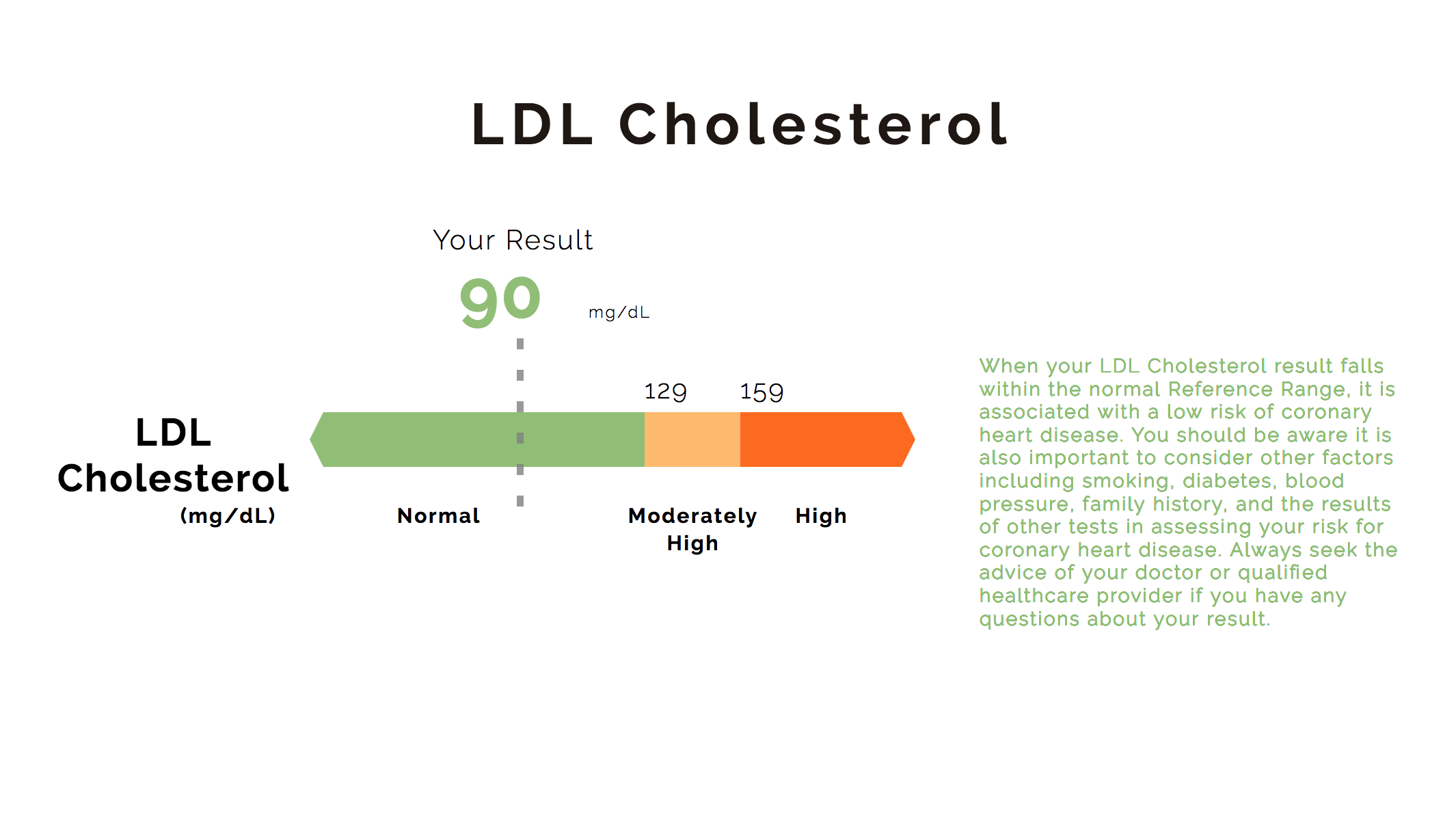What is LDL Cholesterol?
Low-density lipoprotein cholesterol (LDL), commonly called “bad cholesterol,” contributes to plaque, “a thick, hard deposit that can clog arteries and make them less flexible.” Elevated LDL cholesterol is associated with an increased risk of heart disease, heart attack, and stroke.
How to Measure Your LDL Cholesterol Level
In biometric screening results, LDL cholesterol will be measured in milligrams per deciliter of blood (mg/dL). A healthy level of LDL cholesterol for both males and females is less than 130 mg/dL.
Most LDL cholesterol results are calculated from a formula based on measurements of total cholesterol and triglycerides. Triglycerides are sensitive to food and drink, so if a participant does not fast prior to screening, their triglyceride result, and thus their LDL cholesterol result, may not be an accurate representation of health status. In some cases, when a non-fasting screening is ordered or when triglycerides are very high, direct LDL cholesterol is measured instead of using triglycerides to calculate LDL. A direct LDL is a more accurate measurement for employer screenings that does not require fasting.
LDL Cholesterol and Nutrition
A diet high in saturated and trans fats is linked to high LDL cholesterol levels. Typically, choosing a heart-healthy diet, including low-fat proteins and a variety of fruits and vegetables, as well as exercising regularly, can help to reduce LDL cholesterol. In some cases, medication may also be needed. There are often no symptoms of high LDL cholesterol, so when a participant finds high LDL cholesterol through their wellness screening, it is usually recommended that participant speak with their primary care physician.
Your doctor can assist in creating a plan to monitor or improve your LDL cholesterol and decrease your cardiovascular risk.


